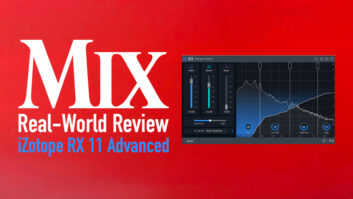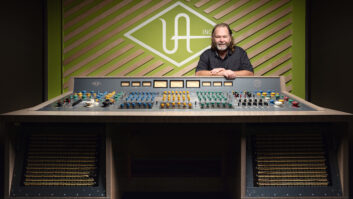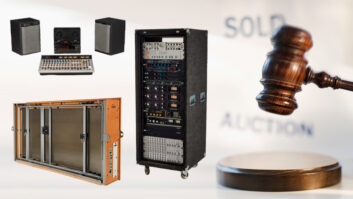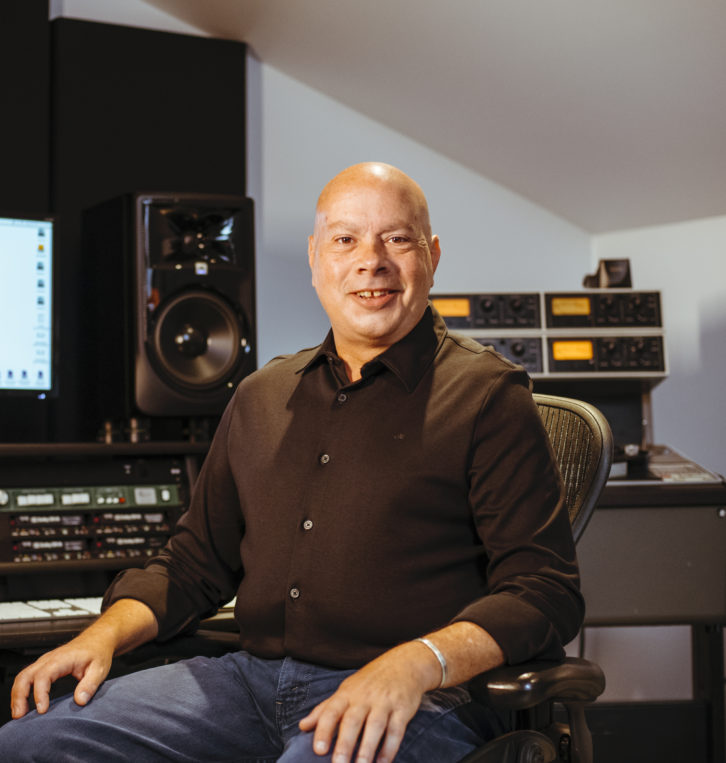
United Recording recently named Grammy-nominated recording industry veteran Bill Smith as Chief Archiving Engineer for its ever-expanding Archiving division. With 35 years in the business, Smith brings a broad and extensive background based on hard-earned skills in caring for, reviving, reconditioning and restoring audio resources.
But what path led Smith to archiving, of all things audio? “When I was very young,” Smith recalls, “I can only remember being drawn to and really interested in one thing—music. Initially, it was the rhythm, melodies and lyrics that appealed to me, followed not too long after by the more complex concepts of note, shape, form, harmony, counterpoint, and the other things that form the basis of musical composition. I initially thought I would be a musician, and while I had a good aptitude and talent for it, I grew to realize there were lots of other people who were a whole lot better than I was.”
Realizing his limitations as a musician led Smith in another musical direction. “During this time I would usually be camped out in my local record shop flipping through all of the LP’s and studying the jackets and reading the back cover credits. One thing that I always noticed was the credit for the recording engineer on the album. I wondered to myself what was that all about? So I began to investigate who those guys were and what their function was in all of this music I was listening to.
“The more I learned about what the role of a recording engineer was the more I came to realize that this was also a path to being able to create. It was in a different way from writing or performing, but still an avenue to do something directly connected to music that afforded the ability to use your mind and imagination in a way that wasn’t bounded by rules or regulations. This appealed to me immensely, and I began to move in that direction. And here I am now, 36 years later, extremely grateful that I have been able to spend my life doing something I love—and never regretting a single moment of it.”
Smith began his professional career in New York City in 1986, working at The Hit Factory, Quad Recording and Todd Rundgren’s Secret Sound Studios. He cut his teeth working on albums for artists such as The Violent Femmes, Lou Reed, Leni Stern, C&C Music Factory and Grandmaster Flash before moving to Los Angeles in 1990.
Upon his arrival in L.A., he secured a position as engineer at Capitol Studios, where he remained for several years before transitioning into freelance engineering. As an archivist, Smith became well-versed in the varied operations required for the restoration of entire tape catalogs for a number of major artists.
When asked about his most challenging archival project, Smith replies, “That would be archiving the entire multi-track tape catalog for Natalie Cole. Natalie was someone I had worked with many times on a few albums over the years, and I knew her personally, so I had a bit of an attachment to this project.
History in a Catalog
“There were so many different formats that were used across all of her albums, starting with the 1975 analog 16-track tapes from her first album, Inseparable, right up to current-day Pro Tools files for her final few recordings. It was a mini-history of recording formats across a 35-year period that included reel-to-reel 16-track analog, single-reel 24-track analog, multiple-reel 24-track analog, 32-track digital, 24-track digital, 48-track digital, and ADAT-style digital tape, right up to computer based recording via Pro Tools. By the time I was finished, I had transferred slightly over 300 reels of tape in an historical variety of formats.”
To strategize the project, Smith decided to work on it chronologically. “At the time she had 22 released records, so I approached it on an album-by-album basis in the order that she recorded them, gathering together the assets for five albums at a time. The analog tapes for her first eight or nine albums had to be baked first before I could begin the transfer process. A majority of them had been recorded using Ampex 456 2-inch tape, which in later years was to become infamous for suffering from sticky shed syndrome, so that was another hurdle to be overcome.”
“As the work progressed I needed to be changing or adding analog playback machines to fit my needs (16/24-track, single reel/multiple reel), as well as changing any noise reduction also required, Dolby A and then Dolby SR, in order to decode noise reduction the reels had been recorded with. With all of that, of course, comes the need to properly align both the tape machines and Dolby units for proper playback each time, which could happen several times a day.
“The same was true with regards to having to change tape machines when I got into the digital era: 32-track/24-track/48-track/ADAT. Although I no longer needed to align tones and Dolby units, these various digital formats required having to employ Otari UFC-24 Digital Format Convertors so I could export everything into a final, consistent AES/EBU digital format that could then be fed into Pro Tools in order to make direct digital-to-digital copies.”
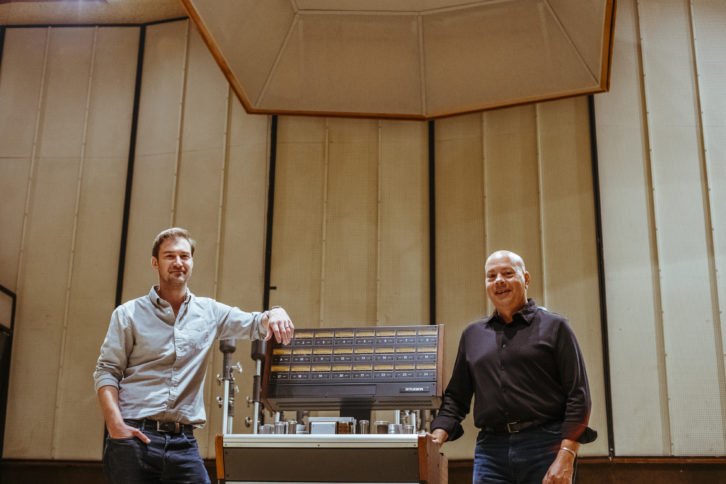
Prior to heading up the archiving operation at United Recording, Smith spent 34 years as an in-demand recording engineer and music producer. He recorded and worked on numerous Gold and Platinum records, many of which were Grammy-winning and Grammy-nominated records and film soundtracks.
During this time, Smith engineered and worked on albums for Barbra Streisand, Quincy Jones and Sammy Nestico, Whitney Houston, George Benson, The Manhattan Transfer, Toto, Chris Botti, Steve Lukather, Natalie Cole, John Fogerty, YES, Queen Latifah, Diana Krall, Trevor Horn, Christopher Cross, and many others. Some of the numerous film scores Smith has been involved with over the years include Forrest Gump, Midnight in the Garden of Good and Evil, Payback, Godzilla, Wyatt Earp and Grace of My Heart.
Learning at the Side of Al Schmitt
Smith also spent 11 years working as the personal recording assistant, co-engineer and Pro Tools operator alongside 23-time Grammy-winning recording engineer, producer and music industry legend Al Schmitt. During those years Smith and Schmitt traveled both nationally and abroad working together on a sizable number of projects for some of the best-known names in the music industry.
“After I moved to Los Angeles and progressed in the business,” Smith says, “if I had to point to one person who has had the greatest effect on me and I can truly say took me under his wing and whom I would consider a mentor it would have to be Al Schmitt without question. Having the opportunity to work alongside him for so many years as I did, and the wide variety of album projects we worked on together was like attending the Harvard University for recording engineers.
“Alongside the infinite depth of knowledge he has in terms of the actual process of recording, mixing and record creation, there is the aspect of client interaction, client support, personal integrity, humility and total professionalism which he advocates and stands for that are equally important as recording the music itself.”
Al Schmitt comments: “Bill is one of my dearest friends, we have worked together for years and United is truly lucky to have a man of his integrity, competency, technical skill and background heading their Archiving department. His attention to detail is incredible, and he has such extensive experience with all recording formats that I would trust him completely with every aspect of any archiving project.”
Now With United
United Archiving’s facilities are perhaps the most comprehensive and complete world-class purpose-built archival rooms in existence today. In addition to the studio’s extensive collection of vintage analog and digital equipment, they also feature high-level security, climate-controlled tape storage, analog tape baking via state-of-the-art lab-grade convection ovens, cutting-edge hardware and software, dedicated electrical power, custom-designed anti-static flooring and in-house technicians who maintain all equipment to the highest possible operational standards.
In conclusion, Smith says, “In today’s modern world where technology, application software versions, plug-in formats, computers and interfaces are changing in the blink of an eye, even Pro Tools sessions from ten years ago are becoming difficult to open and recover. Do you have all of your audio files consolidated, labeled and stored in a way that will allow you to access them in the future on any editing platform? Archiving provides you the ability to generate income by repurposing your existing catalog and material for today’s modern formats, making it always available for any number of enterprising purposes.”





